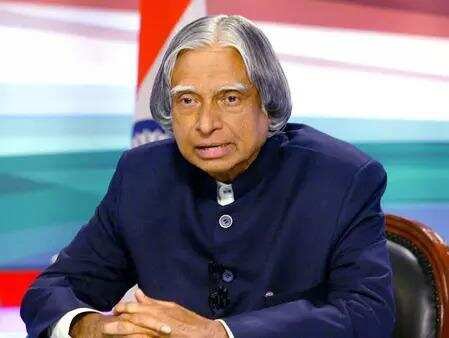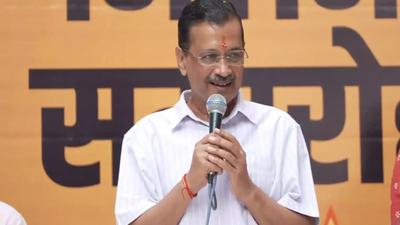
When India gained independence, there was un urgent need to indigenize defence systems, hitherto completely ignored under colonial rule. The India of 1950s imported most of its arms and ammunitions from the UK. By the 1960’s, as part of the global movement to contain communism, the US also joined this list by selling arms and ammunition to both India and Pakistan. By 1970s, India had pivoted to the polar opposite, relying on the Soviet arms for its defence in the 80’s as part of its non-aligned movement. Through these three decades, there was an Avul Pakir Jainulabdeen Abdul Kalam, better known nationally as Dr APJ Abdul Kalam. Today we remember him posthumously as the 11th President of India. But he was once just a school going kid in British India. He was 16 when he saw India declare independence, and 19 years old when she became a republic. The urge to defend himself, his loved ones, and to see his country defending its freedom – all constituted Abdul Kalam’s foundational years, and his perspective on defence and self-reliance.

India’s journey towards self-reliance in defence did not start with flashy policy announcements or billion-dollar deals. It began in the dusty labs and testing grounds where a soft-spoken space scientist turned defence scientist named Dr. APJ Abdul Kalam dreamed of a technology leapfrog in defence for his country, through the IGMDP programme. Known affectionately as the “Missile Man of India,” Dr Kalam was not just building rockets; he was laying the foundation for a nation that could stand on its own feet in a world full of uncertainties. Clearly his work in the 1980s was built with a vision of the 21st century.
Today, as we look back over the last decade, it is clear how the Indian government has fanned those flames into roaring ‘wings of fire’, pushing defence modernization into overdrive across every branch of the Armed Forces. From cutting-edge R&D to booming manufacturing, India’s defence ecosystem is transforming, turning the country from a major importer into an emerging exporter.
The last ten years have witnessed a paradigm shift in India’s defence policy, approach and ecosystem, driven by the government’s commitment to “Make in India” and “Atmanirbhar Bharat.”
India’s defence sector has undergone a profound transformation over the past decade, driven by a clear governmental vision to achieve strategic autonomy and reduce dependence on foreign suppliers. The shift from being one of the world’s largest importers of defence equipment to becoming a rising exporter and manufacturer has been orchestrated through a series of bold policy reforms, infrastructure investments, and collaborative initiatives involving both public and private stakeholders.
At the heart of this transformation lies the government’s flagship “Aatmanirbhar Bharat” (Self-Reliant India) initiative, which has placed defence manufacturing at the forefront of national development. Complementing this is the “Make in India” campaign, launched in 2014, which has galvanized domestic production across sectors. As a result, India’s defence production has surged from ~INR 46,000 crore in 2014 to a record ~INR 1.5 lakh crore in 2025, with the private sector contributing over ~INR 33,000 crore – a clear indication of its growing role in the ecosystem.
To streamline procurement and promote indigenous manufacturing, the government introduced the Defence Acquisition Procedure (DAP) 2020. This policy prioritizes domestic sourcing and includes Positive Indigenisation Lists that restrict imports of thousands of items, thereby creating a predictable demand for Indian manufacturers. Additionally, the Defence Procurement Manual 2025 and Defence Offsets Policy have been refined to encourage innovation and ease of doing business.
Foreign Direct Investment (FDI) norms have also been liberalized, allowing up to 74% investment through the automatic route and 100% via government approval. This has led to almost INR 5,500 crore in FDI inflows, enabling joint ventures and technology transfers that strengthen domestic capabilities. The establishment of Defence Industrial Corridors in Uttar Pradesh and Tamil Nadu has further catalyzed growth, attracting investments and fostering partnerships between industries and state governments.
The government has also focused on empowering startups and MSMEs through initiatives like iDEX (Innovations for Defence Excellence) and the Technology Development Fund. These programs have supported over 650 startups, with prototype procurements and AoNs together accounting for more than INR 3,000 crore, reflecting a vibrant innovation ecosystem. Digital platforms such as the SRIJAN-DEEP portal and the Defence Exim Portal have enhanced transparency and streamlined export-import processes.
India’s achievements in defence exports are equally noteworthy. From less than INR 1,000 crore in 2014, exports have soared to INR 23,622 crore in 2025, with targets set at INR 50,000 crore by 2029. Indian-made platforms like the BrahMos missile, Akash air defence system, and Tejas fighter aircraft are now being exported to over 100 countries, showcasing India’s growing reputation as a reliable defence partner.
Indigenous development has reached new heights with the successful deployment of platforms such as the Prachand Light Combat Helicopter, Advanced Towed Artillery Gun System (ATAGS), and INS Vikrant, India’s first indigenously built aircraft carrier. These achievements underscore the nation’s technical prowess and the effectiveness of government support in nurturing complex defence projects. This is not just about numbers; it is about real change. The government has nurtured startups through schemes like iDEX and TDF, and made the ecosystem much more competitive, while at the same time making it investor and industry friendly. This fast-tracking across all strata of the stakeholders from industry to policy makers, has put India’s defence modernization in full swing, touching every segment: army, navy, air force, homeland security and even space and cyber domains.
Modernization today focuses on mobility, firepower, and technology integration. Drones are a big push – from surveillance UAVs like the Drishti-10 to swarm drones developed under iDEX. Manufacturing has also witnessed a significant transformation. Artillery systems, aircraft platforms, missiles systems and ammunition are today not just made in India and inducted into the forces, but are also being exported and / or being considered for exports to friendly countries. More importantly these milestones have come in collaboration with the private sector. The private sector’s role has expanded significantly, with companies leading innovation and manufacturing efforts – not just at component, system or subsystem level but even at a platform level.
In conclusion, the Indian government’s strategic vision, backed by policy reforms, infrastructure development, and inclusive growth models, has laid a strong foundation for a self-reliant and globally competitive defence sector. As India moves toward its 2047 goals, the synergy between public institutions, private enterprises, and technological innovation will be crucial in sustaining this momentum and securing the nation’s place as a global defence powerhouse.
Disclaimer
Views expressed above are the author’s own.
END OF ARTICLE






